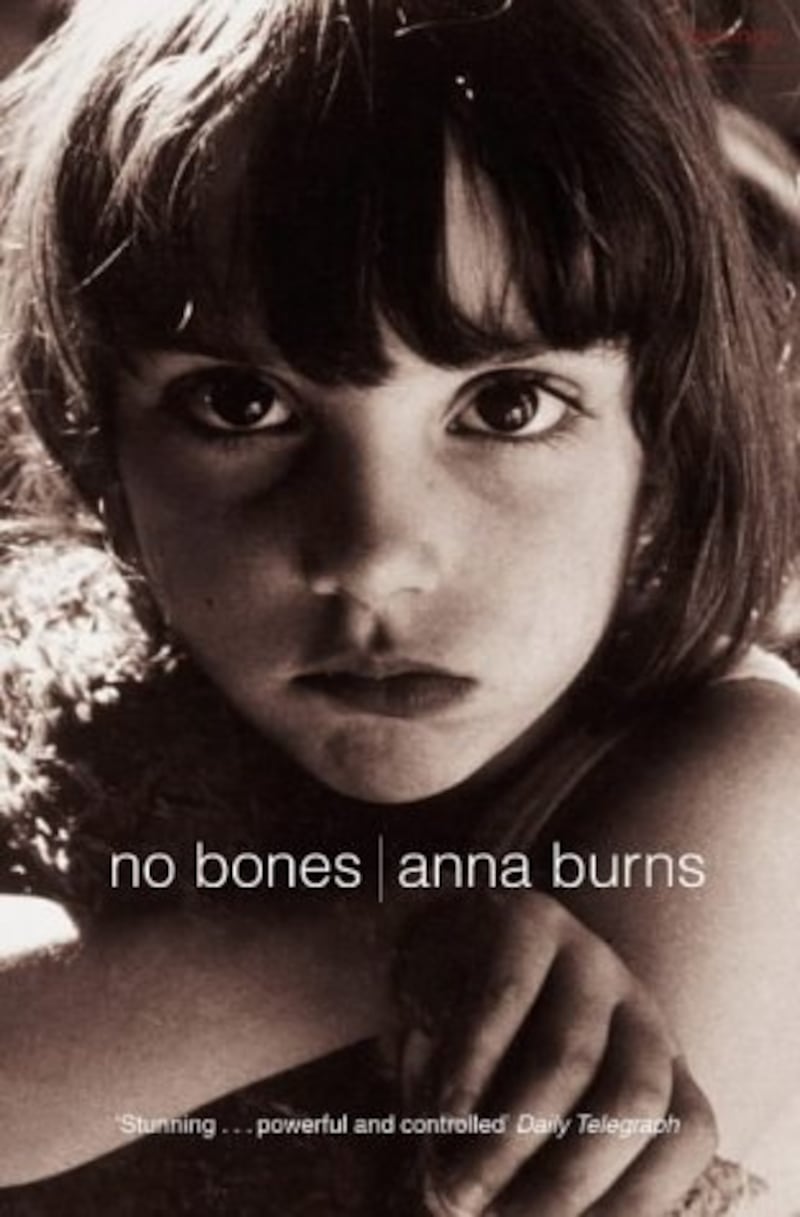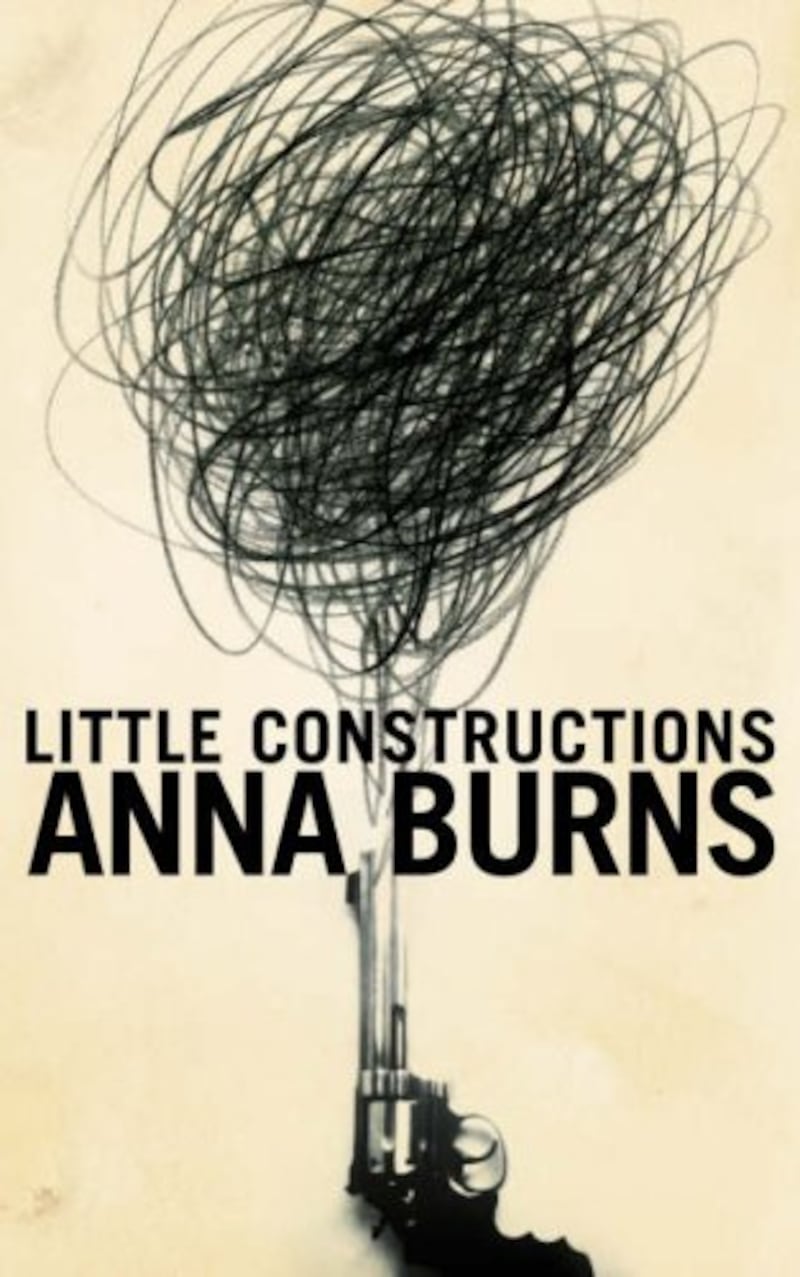After the success of Milkman, Anna Burns's so-called difficult (yet best-selling) Booker winner, her first two novels, No Bones (2001) and Little Constructions (2007) have been reissued. With over a decade between her second novel and Milkman, there has been an inevitable maturing in Burns's style, though these first two novels are bold, terrifying, funny and profound, and it is a blessing that they will now be brought back into the public eye.

No Bones was highly acclaimed on its release, becoming a finalist for the Orange Prize and winning the Winifred Holtby Memorial Prize, and it is certainly worth some renewed attention, not only for the ways in which it dialogues with Milkman but for its own merits, too. Amelia Lovett and her schoolfriends await the end of the Troubles, hoping for reconciliation, for normalcy. At the beginning, Burns introduces a tragic irony that pervades the novel, a Bildungsroman. Each of its chapters set in a different year of the Troubles, and time is a constant antagonist. All the girls in the novel want is for the violence, a source of curiosity at first, and then a pervasive and insidious bleakness, to end. "The Troubles started on a Thursday. At six o'clock at night. And seven whole days later, for Amelia was counting, she could hardly believe it, for here they were, still going on."
Dead bodies
This is a world full of dead bodies, of children selling rubber bullets back to soldiers, teenagers writing poems in school full of female torsos floating in rivers, women being beaten, where a miscarried baby is carried in its amniotic sack by a confused and grieving mother and Amelia descends into anorexia and psychosis. But it is also a world of pranks, banter and intimacy. If the scenes are occasionally cartoonish, or grotesque, Burns often manages to rein them in with moments of carefully observed humanity.
There is, too, something of the novels of Samuel Beckett in Burns’s keen eye for absurdity and tragicomedy amid an increasingly bleak landscape. Her conjuring of school scenes, of family arguments, of random acts of violence, is by turns tender and painful. Her prose is brilliant, shocking and utterly relentless. Though the short chapters, which cover a long scope of years, might make the reader lose energy in places, suffering a constant barrage, they are effective in their totality.
______________________

Continuing her skill for punchy opening lines that set the whole novel ringing like a tuning fork, Little Constructions, Burns's second novel, opens: "There are no differences between men and women. No differences. Except one. Men want to know what sort of gun it is. Women just want the gun." Beginning as a woman bursts into a gun shop in the town of Tiptoe Floorboard, Little Constructions is convoluted and brave, and tells the stories of a family of victims and criminals in the chilling and blackly comedic voice that has become Burns's stock in trade. Though not drawing on the Belfast dialect of No Bones and Milkman, the narrative is still distinctly Burns's own.
Although this second novel continues Burns's interest in violence, and in retribution, it is not a historical novel in the same sense as No Bones. What some readers have found disorienting or difficult about Milkman, exacerbated by the lack of proper names for characters (who are referred to as, for example, "middle sister", or "maybe-boyfriend"), finds a precedent in Little Constructions, in which all the women have names beginning with J: Jetty, Janine, Joshuatine, Janet, Jennifer. This makes the novel's early scenes hard to follow in places, but adds to the surrealism of the narrative and reinforces its sense of the dehumanising, depersonalising effects of random violence.
Paramilitary gang
Although not explicitly a "Troubles novel", Burns satirises the cliches of that genre with gusto. The fictional town is lauded over by a woman with a Kalashnikov; a paramilitary gang haunts the streets; torturers use Ouija boards in order to identify traitors to the cause. As with No Bones, Burns's energy and boisterousness overshoot the mark sometimes, with the novel's structure (which can leave the reader disoriented) combining with a meandering and erratic narrator to produce a novel at once explosive and maddening. This is a tricksy, playful but also jumbled book. With no desire to be a realist novel, Little Constructions requires immersion and perseverance from the reader, but (like Milkman) it repays the debt.
Readers have disproved many critics who have lambasted this year's Booker winner as too difficult to sell in any great numbers. Apparently a "bold choice" for the win, Milkman has gone on to sell 350,000 copies with Faber (Burns's British publisher), and is published in the US by Graywolf Press. In No Bones and Little Constructions, we find many of the things some critics have found frustrating about Burns's writing, but readers will also recognise the bravery, humour and distinction of this writer. After reading Milkman, it is to be hoped that the public will turn to these earlier novels, which are also challenging, resonant and rewarding, and deserving of renewed attention.


















